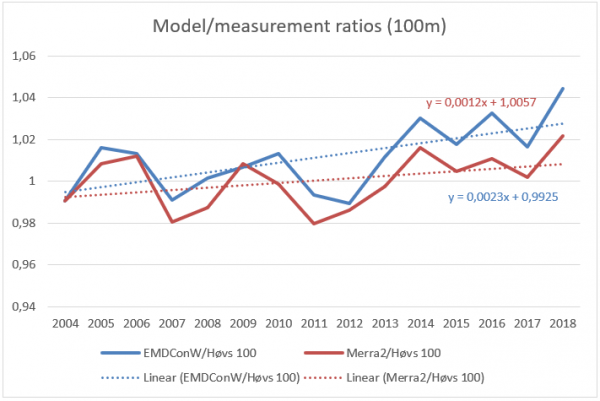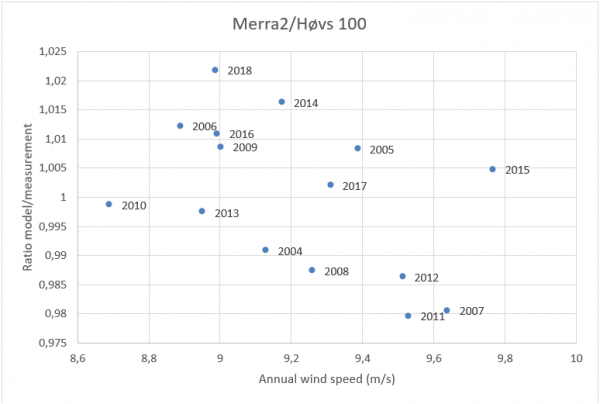Difference between revisions of "Mesodaten Langzeitkonsistenz (Englisch)"
| (One intermediate revision by the same user not shown) | |||
| Line 1: | Line 1: | ||
| − | {{#ifeq: {{PAGENAME}} |Mesodaten Langzeitkonsistenz|{{Hauptlink}}[[Category:Validierung]][[Category:MCP (DE)]][[Category:METEO-Objekt]]}} | + | {{#ifeq: {{PAGENAME}} |Mesodaten Langzeitkonsistenz (Englisch)|{{Hauptlink}}[[Category:Validierung]][[Category:MCP (DE)]][[Category:METEO-Objekt]]}} |
| + | |||
| + | <big>'''Meso data long term consistency'''</big> | ||
| − | |||
[[File:DE_Energy_Validation(1).png|800px]] | [[File:DE_Energy_Validation(1).png|800px]] | ||
Revision as of 17:20, 23 December 2019
Zur deutschen Hauptseite | Alle deutschsprachigen Seiten
Meso data long term consistency
Image:Long-term consistency using Meso data
This screen shot shows how well the meso data based calculation matches measured production on a time scale of 18 years. The Tunø Knob offshore wind farm has been operating very well with few problems and a high availability during all 18 years. Thereby, it is a good validation case. It is seen that year-by-year model errors are within +/-5% and month by month within +/- 10%, apart from few months where the problems probably were related to availability issues.
This example can although not alone validate the long term consistency.
Another test case is Høvsøre wind measurement mast versus Merra-2 and EMDConWx:
Wind speed rations Model data/measurements 2004-18:
As seen as well EMDConWx meso data set as Merra-2 has a trend relative to measurements. It is in size order 1-2% per 10 year as average for this site. What could be the explanations?
- Roughness increase, more trees, buildings and turbines affect the measurements, but not the model data.
- Measurement equipment changes in time, although it is assumed this is recalibrated regularly (?)
- Measurements are never "perfect".
What for sure is seen is different behaviour in low and high wind years. See graph below:
MERRA2/measurements for Høvsøre 100m (Merra-2 scaled to Høvsøre average):
There is a clear trend, that in low wind years, the model data are to high and in high wind years they are too low. In other words, model data vary less by high/low wind years than measurements. This problem can be handled by post processing the model data, something EMD is working on finding good methods to solve.


